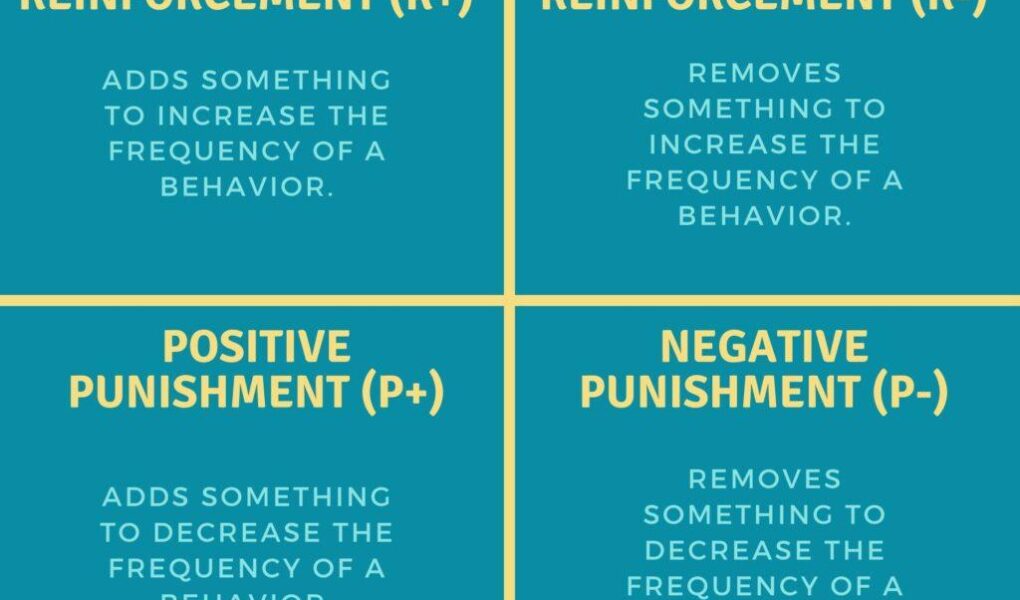In the dynamic world of dog training, innovative methods are constantly emerging to bridge the gap between human and canine communication. One such approach that has gained traction in recent years is r+ dog training, or positive reinforcement training. This method not only emphasizes the importance of rewarding desirable behaviors but also fosters a deeper bond between dogs and their human companions. By focusing on encouragement rather than punishment, r+ training seeks to create a harmonious learning environment where dogs can thrive. In this article, we will explore the principles behind r+ dog training, its benefits, and practical tips for integrating this compassionate technique into your everyday interactions with your furry friend. Whether you are a seasoned trainer or a first-time dog owner, understanding r+ dog training can enhance your experience and lead to a more fulfilling relationship with your canine companion.
Table of Contents
- Understanding the Foundations of R+ Dog Training
- Techniques to Enhance Positive Reinforcement
- Common Challenges and Solutions in R+ Training
- Building a Lasting Bond Through Positive Experiences
- Q&A
- In Conclusion
Understanding the Foundations of R+ Dog Training
At the heart of R+ dog training lies the principle of reinforcement, which emphasizes the importance of rewarding desired behaviors rather than punishing unwanted ones. This approach is grounded in the idea that positive experiences will encourage dogs to repeat behaviors that yield rewarding outcomes. Key components of this training method include:
- Positive Reinforcement: Utilizing treats, praise, or playtime when a dog exhibits the desired behavior.
- Timing: Delivering reinforcement immediately after the behavior to create a strong association.
- Consistency: Ensuring all caregivers apply the same rules and reward systems to avoid confusion.
Moreover, understanding the nuances of dog behavior is crucial for effective training. Each dog is an individual, shaped by its experiences and temperament. Therefore, R+ training encourages flexibility in technique, adjusting based on the dog’s response. Here’s a simple overview of how various factors can influence training outcomes:
| Factor | Influence on Training |
|---|---|
| Environment | Familiar places may yield better performance due to reduced distractions. |
| Handler’s Attitude | A calm and positive demeanor fosters a trusting atmosphere for learning. |
| Dog’s Health | Physical or mental conditions can affect a dog’s ability to concentrate. |
Techniques to Enhance Positive Reinforcement
Incorporating various techniques can significantly enhance the effectiveness of positive reinforcement when training dogs. One effective strategy is to create a clear association between the desired behavior and the reward. This can be done by using a specific *cue word* or *gesture* each time the dog performs the desired action. Consistency is key; ensuring the cue is the same every time helps the dog understand what is being reinforced. Other strategies include varying the type of rewards based on the complexity of the task, allowing room for progression. For instance, using high-value treats like cheese or meat for challenging tasks, while reserving everyday treats for simpler commands, can maintain the dog’s motivation and engagement.
Another method to increase positive reinforcement effectiveness is to implement a reward schedule. Instead of rewarding every single successful behavior, *intermittent reinforcement* can keep dogs more engaged by making rewards less predictable. This strategy can be complemented by timing the rewards precisely; giving praise or treats immediately after the desired behavior boosts the learning process. To support these techniques, consider using a table to track your dog’s progress and the responses to different rewards:
| Behavior | Reward Type | Response Type |
|---|---|---|
| Sit | Higher-value treat | Immediate praise |
| Stay | Regular treat | Cheerful tone |
| Come | Mix of treats | Excited praise |
Common Challenges and Solutions in R+ Training
One of the most common challenges trainers face when implementing R+ dog training is maintaining consistency in rewards. Dogs thrive on predictable outcomes, and a lack of uniformity can create confusion. To tackle this issue, trainers should establish clear criteria for desired behaviors and ensure that all members of the household adhere to these guidelines. Keeping a reward chart can also be beneficial in tracking behavior changes and ensuring a consistent approach. This not only fosters understanding for the dog but also empowers owners to stay on the same page.
Another challenge often encountered is the dog’s distraction during training sessions, which can lead to disengagement or undesired behaviors. To address this, it’s important to create an environment conducive to focus. Here are some strategies to enhance training sessions:
- Select a quiet location: Choose a space with minimal distractions to help your dog concentrate.
- Use high-value treats: Opt for special rewards that will capture your dog’s attention and motivate them.
- Introduce short training bursts: Keep sessions brief and varied to maintain enthusiasm and interest.
| Challenge | Solution |
|---|---|
| Inconsistent rewards | Establish clear criteria and maintain a reward chart |
| Distractions | Select quiet locations and use high-value treats |
Building a Lasting Bond Through Positive Experiences
Creating a strong bond with your dog is essential for a harmonious relationship, and the power of positive experiences cannot be underestimated. Engaging in activities that foster trust can greatly enhance the connection between you and your canine companion. Here are some effective ways to incorporate positive experiences into your training regimen:
- Playtime: Engage in fun activities that your dog enjoys, such as fetch or tug-of-war, to build excitement and trust.
- Interactive Training: Use positive reinforcement techniques, rewarding your dog with treats and praises for successfully following commands.
- Socialization: Introduce your dog to new environments and other animals. This broadens their experiences and decreases anxiety.
- Quality Time: Simply spending time together, whether through walks or cuddles, can strengthen your bond significantly.
These positive moments create a tapestry of experiences that enrich your relationship. As you explore different training techniques, consider tracking your dog’s progress and milestones in a structured way. Here’s a simple table to help you monitor significant achievements:
| Training Activity | Date | Outcome |
|---|---|---|
| Basic Commands | 2023-09-01 | Successfully performed sit, stay, and come |
| Socialization with Other Dogs | 2023-09-15 | No aggression, played well |
| Obstacle Course | 2023-09-20 | Completed with enthusiasm |
By consistently focusing on positive experiences, you lay the groundwork for a trusting and rewarding partnership with your dog. Each training session infused with fun and positivity strengthens your bond and contributes to a well-behaved and happy pet.
Q&A
Q&A: Understanding R+ Dog Training
Q1: What is R+ dog training?
A1: R+ dog training, or positive reinforcement training, is a technique that focuses on rewarding desirable behaviors to encourage their repetition. Unlike traditional training methods that may employ punishment, R+ training uses treats, praise, toys, or other rewards to motivate dogs and foster a loving bond between pet and owner.
Q2: How does R+ dog training work in practice?
A2: In R+ training, when a dog performs the desired behavior – such as sitting, staying, or coming when called – they are immediately rewarded. The timing of the reward is crucial; it helps the dog make a clear connection between the behavior and the positive outcome. For example, if your dog sits on command and receives a treat right afterward, they’ll begin to associate sitting with the pleasant reward.
Q3: Are there specific rewards I should use?
A3: The best rewards vary by dog. Some may prefer tasty treats, while others might respond better to toys or verbal praise. It’s essential to find what your dog values most, and this may change depending on the context (like fresh food versus a favorite squeaky toy).
Q4: Is R+ training effective for all dog breeds?
A4: Yes, R+ training is effective for all breeds and ages! While each dog may learn at their own pace, the fundamental principles of positive reinforcement can be tailored to suit individual personalities, energy levels, and temperaments. The key is consistency and patience.
Q5: Are there any limitations or challenges with R+ training?
A5: Like any training method, R+ training can have its challenges. Dogs may become overly dependent on rewards, which can lead to issues if those rewards aren’t consistently available. It’s crucial to gradually reduce the frequency of rewards (a process called fading) and incorporate variable reinforcement to maintain the behavior over time.
Q6: Can R+ training be used alongside other training methods?
A6: Absolutely! R+ dog training can be effectively combined with other training approaches, provided they align with a positive, humane philosophy. Many trainers integrate techniques from clicker training or use management strategies alongside positive reinforcement, creating a comprehensive toolkit for behavior modification.
Q7: How do I get started with R+ training?
A7: To embark on an R+ training journey, begin with basic commands like “sit,” “stay,” or “come.” Keep training sessions short and engaging—5 to 10 minutes is optimal—to maintain your dog’s focus. Have plenty of rewards on hand to reinforce their good behavior. And remember, the process should be fun for both you and your furry friend.
Q8: What if my dog doesn’t respond to R+ training?
A8: If your dog seems unresponsive, first evaluate your reward system. They might not find the treats or praises motivating enough. It’s also important to ensure that your dog is in a distraction-free environment, especially when starting to reinforce new behaviors. If challenges persist, consulting a professional trainer might provide additional insights tailored to your specific situation.
Q9: Can R+ training improve my relationship with my dog?
A9: Yes, R+ training can significantly enhance your relationship with your dog. By focusing on encouragement rather than correction, you build trust and mutual respect. As your dog learns to associate commands with rewards and praise, they’re more likely to see you as a positive figure, deepening your bond with each successful training session.
Q10: What are some common misconceptions about R+ dog training?
A10: One common misconception is that R+ training takes more time than traditional methods. While initial sessions may focus on establishing new behaviors, in the long run, positive reinforcement can lead to quicker, more reliable learning. Another myth is that it’s too permissive, but in reality, respecting your dog’s feelings and motivations is key to real progress and effective training.
In Conclusion
As we conclude our exploration of r+ dog training, it’s clear that this approach opens a world of possibilities—not just for fostering positive behaviors in our canines, but also for deepening the bond we share with our four-legged companions. By utilizing the power of reinforcement, we empower our dogs to thrive in a nurturing environment while encouraging their natural instincts in a positive direction. As you embark on your training journey, remember that patience and consistency are key. Celebrate the small victories, enjoy the process, and remain open to the lessons both you and your dog have to share. Ultimately, r+ dog training isn’t just about teaching commands; it’s about building a relationship rooted in trust and joy, paving the way for countless adventures together. Happy training!


